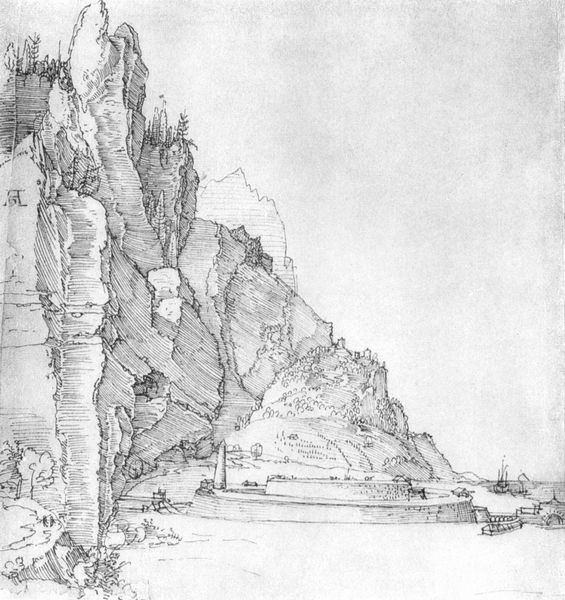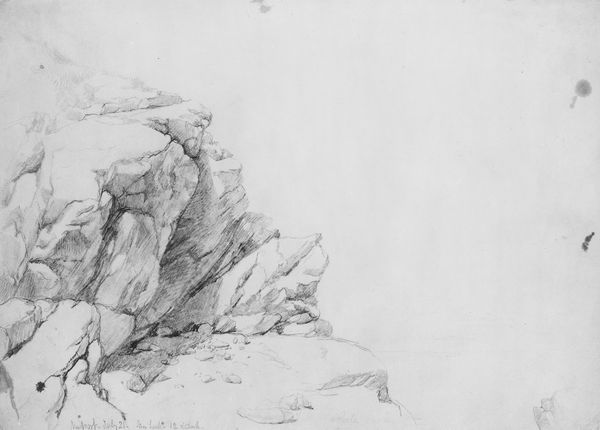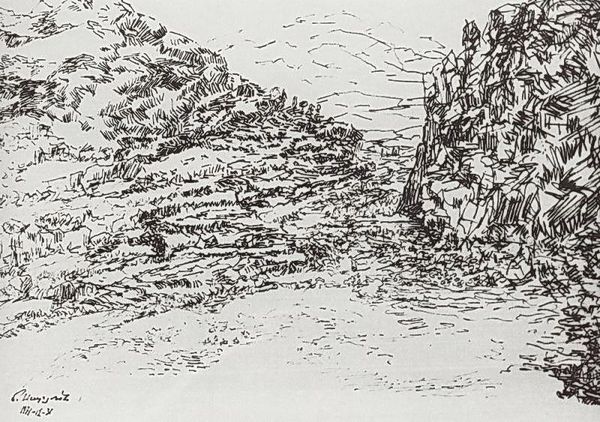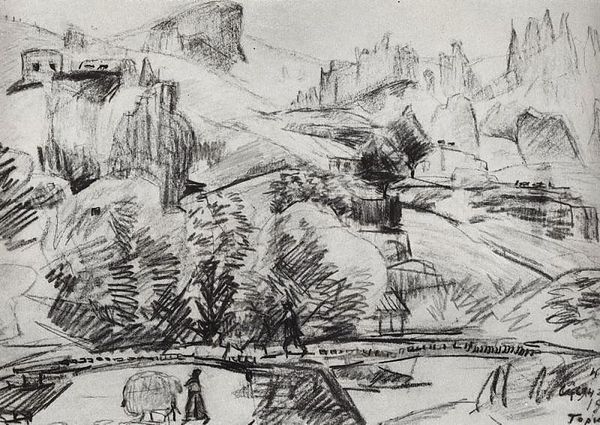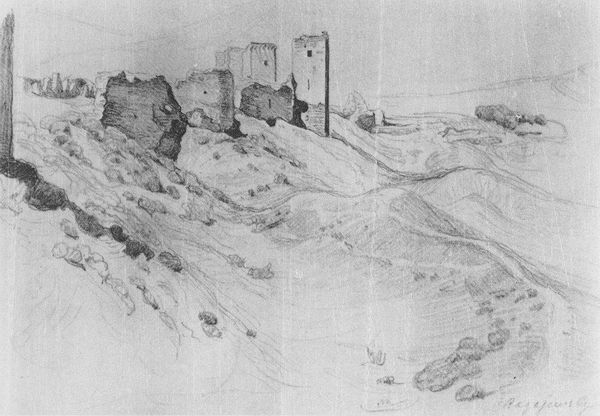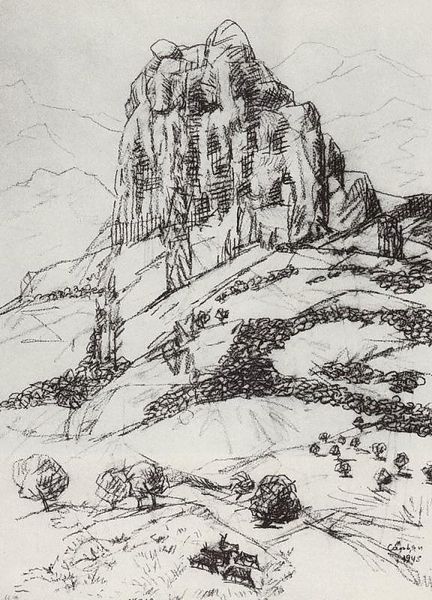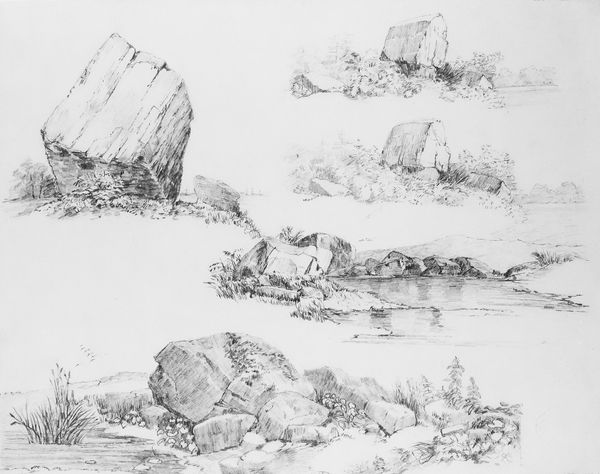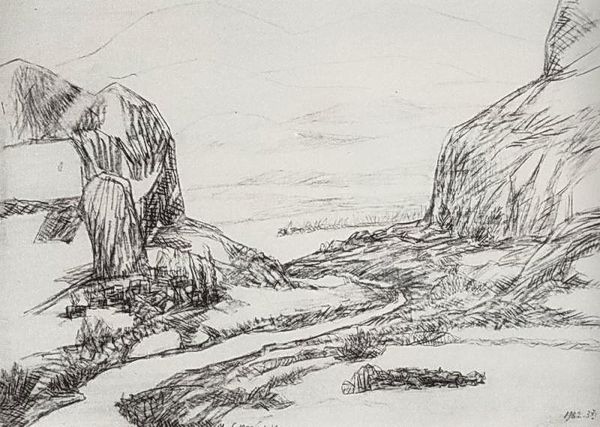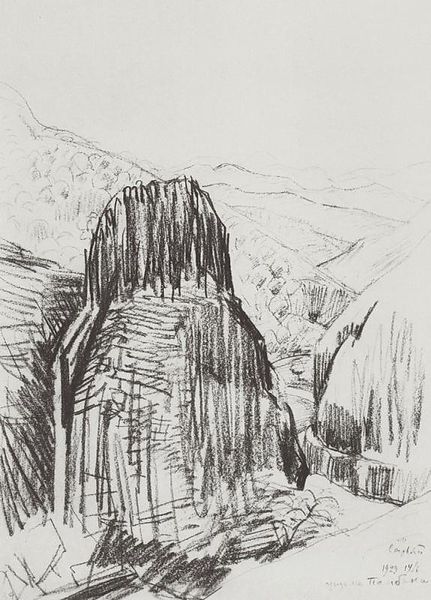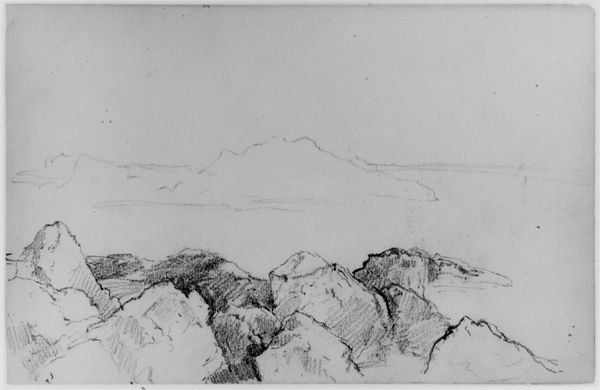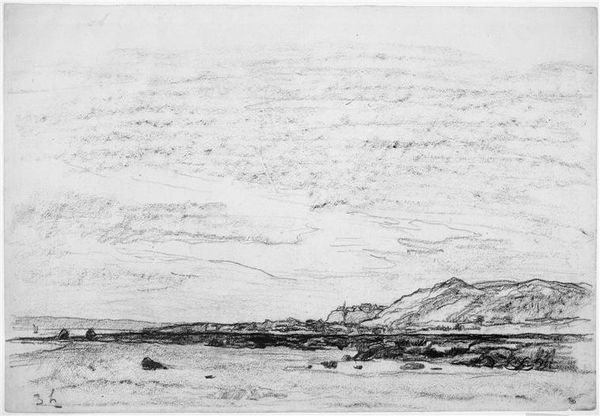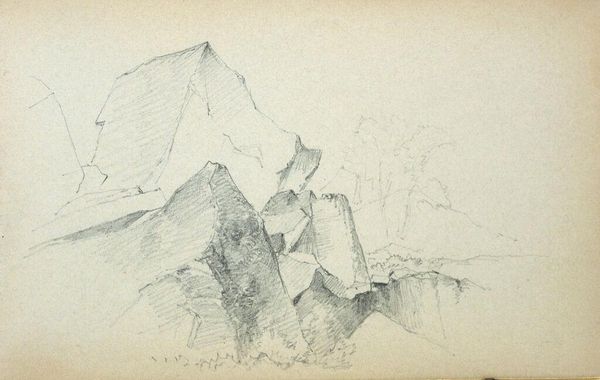
drawing, pencil
#
drawing
#
cliff
#
pencil sketch
#
landscape
#
rock
#
pencil drawing
#
geometric
#
sketch
#
pencil
#
northern-renaissance
Copyright: Public domain
Curator: Looking at this drawing, I’m struck by the somber yet commanding mood. Editor: That’s right. Before us, we have Albrecht Durer's "Rock study of hikers," created around 1497. The piece is rendered in pencil. It’s currently held at the Albertina Museum in Vienna. Curator: I immediately focus on Durer's masterful rendering of light and shadow. See how the stark contrasts define the edges of the rocks, creating an almost tactile sense of texture. It seems so carefully observed and articulated, almost geological. Editor: Indeed. But beyond the sheer technical skill, what I find truly fascinating is how Durer uses this landscape sketch to imply larger themes. Consider the late 15th century context: Durer's images—including this sketch—contributed to the rising humanist interest in observation and empirical experience. Nature was increasingly a subject worthy of detailed study. Curator: And this focus elevates a rather mundane motif to a status previously reserved for religious or historical scenes. However, it looks like the tower in the distance has symbolic value; can you talk more about the function of the landscape as part of the construction of political images and collective identities in early modern Europe? Editor: Well, landscapes often became stages upon which social and political dramas played out. Images of the homeland, like this one showing hikers or wanderers within its confines, reinforced communal ties. Also, landscape began to function as a symbol of territoriality and dominion in conjunction with powerful patrons. Curator: So, the act of portraying, the technique of meticulous observation, speaks volumes. It emphasizes the importance of both individual perspective and shared cultural heritage. It makes you wonder, what was he going to do with that later on? Editor: Exactly. Seeing the composition of this piece, and knowing more about landscape painting later on, gives a deep insight of landscape art as the fusion of visual, symbolic, and socio-historical factors, something for which Durer laid the foundation.
Comments
No comments
Be the first to comment and join the conversation on the ultimate creative platform.
